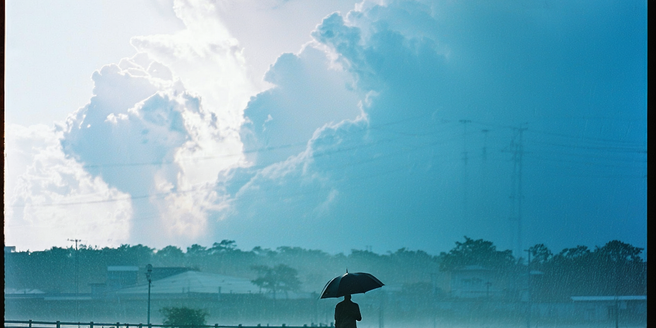
Understanding Bipolar Disorder: Symptoms and Causes
Bipolar Disorder is a complex mental health condition characterized by significant mood swings. Individuals experience episodes of mania, marked by elevated mood and high energy, followed by periods of depression, overwhelming sadness, and low energy. The exact causes of bipolar disorder are not fully understood, but a combination of genetic predisposition, brain structure abnormalities, and environmental stresses are thought to play a role. Triggers such as sleep disturbances and significant life events can exacerbate symptoms. Understanding these symptoms and identifying personal triggers are vital steps in managing the disorder effectively. By closely monitoring mood changes and seeking professional support, individuals with bipolar disorder can lead fulfilling, balanced lives. Early diagnosis and ongoing treatment, often involving medication and therapy, are crucial in mitigating the impact of this condition.
Climate and Mood: How Weather Influences Mental Health
The relationship between weather and mood is a complex interplay that affects many individuals. Changes in temperature, precipitation, and daylight hours can have profound effects on mental health, with some people experiencing mood disturbances in response to specific weather patterns. Sunny days may lift spirits, while overcast, rainy conditions could contribute to feelings of sadness or lethargy. Seasonal Affective Disorder (SAD), a type of depression that occurs at a specific time of year, exemplifies how climate impacts emotional wellbeing. Understanding these connections can help individuals anticipate mood shifts and adopt coping strategies. It is essential to pay attention to one’s emotional responses to weather changes and consider seeking mental health support if needed. Awareness of these patterns may foster resilience and promote a proactive approach in managing mental health.
Seasonal Patterns in Bipolar Disorder: An Overview
Bipolar disorder often exhibits distinct seasonal patterns, with many individuals reporting changes in mood and energy that correspond with specific times of the year. For some, manic episodes occur more frequently in spring or summer, while depressive episodes are more common in fall and winter. These seasonal mood shifts suggest a link between bipolar disorder and environmental factors such as daylight exposure and temperature. Understanding these patterns is crucial in developing effective treatment plans. By anticipating seasonal changes, individuals and healthcare professionals can adjust treatment strategies to better manage symptoms. This might involve altering medication dosages, implementing light therapy, or emphasizing routines that support wellbeing. Recognizing and addressing these seasonal variations can significantly improve quality of life for those living with bipolar disorder.
Investigating Temperature: Effects on Bipolar Symptoms
Temperature fluctuations can have a significant impact on individuals with bipolar disorder. For some, hot weather can trigger manic episodes characterized by increased energy, agitation, and diminished need for sleep. Conversely, colder temperatures can exacerbate depressive symptoms, leading to decreased energy, withdrawal, and feelings of hopelessness. Understanding these effects is vital for managing bipolar disorder, as it allows for proactivity in anticipating and mitigating potential episodes. Strategies may include adjusting physical activity and ensuring a comfortable living environment that accommodates temperature preferences. Keeping a mood diary may also help identify any correlations between temperature and mood changes. Such awareness empowers individuals to tailor their coping mechanisms and, in conjunction with professional guidance, develop a personalized approach to managing bipolar symptoms effectively.
Light Exposure and Its Impact on Bipolar Episodes
Exposure to natural light plays a pivotal role in regulating mood and overall mental health. In the context of bipolar disorder, insufficient sunlight during fall and winter months can contribute to depressive episodes due to decreased serotonin levels. Conversely, excessive sunlight in spring and summer may trigger manic episodes. Awareness of this light exposure link allows individuals to adopt lifestyle adjustments, such as incorporating light therapy during darker months to alleviate depressive symptoms or utilizing blackout curtains in summer to prevent mania. Such interventions can be instrumental in stabilizing mood throughout the year. Monitoring light exposure and understanding its influence on mental health can help in creating an environment that supports mood regulation, ultimately aiding in the effective management of bipolar disorder symptoms.
